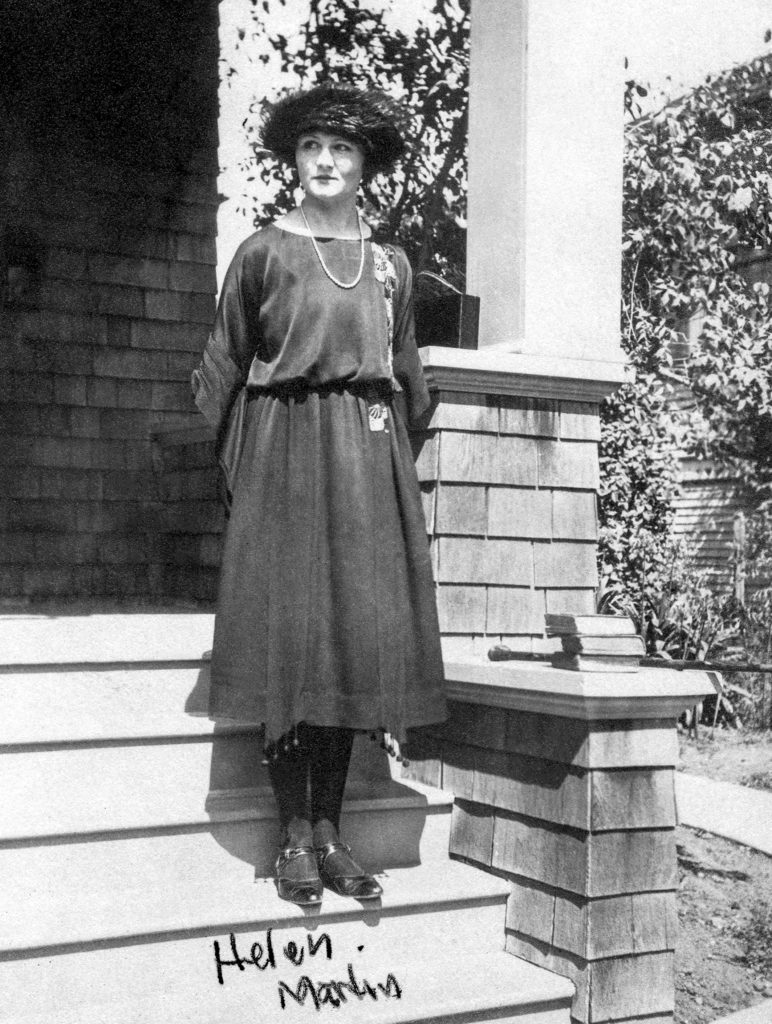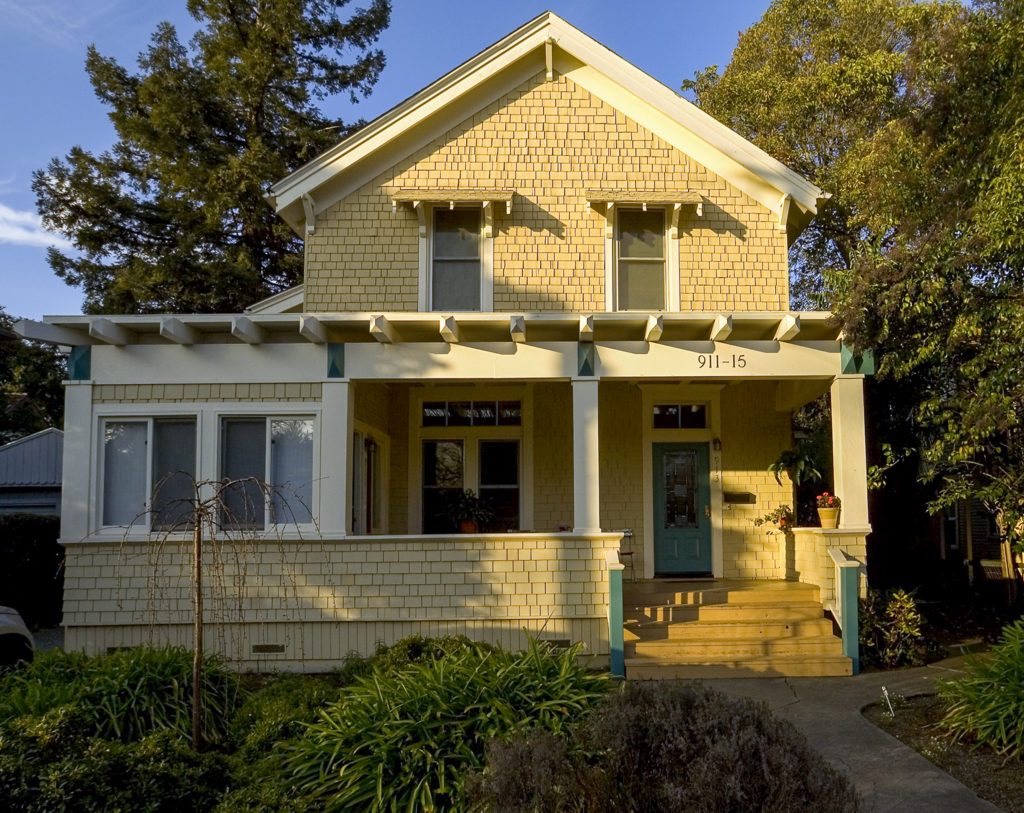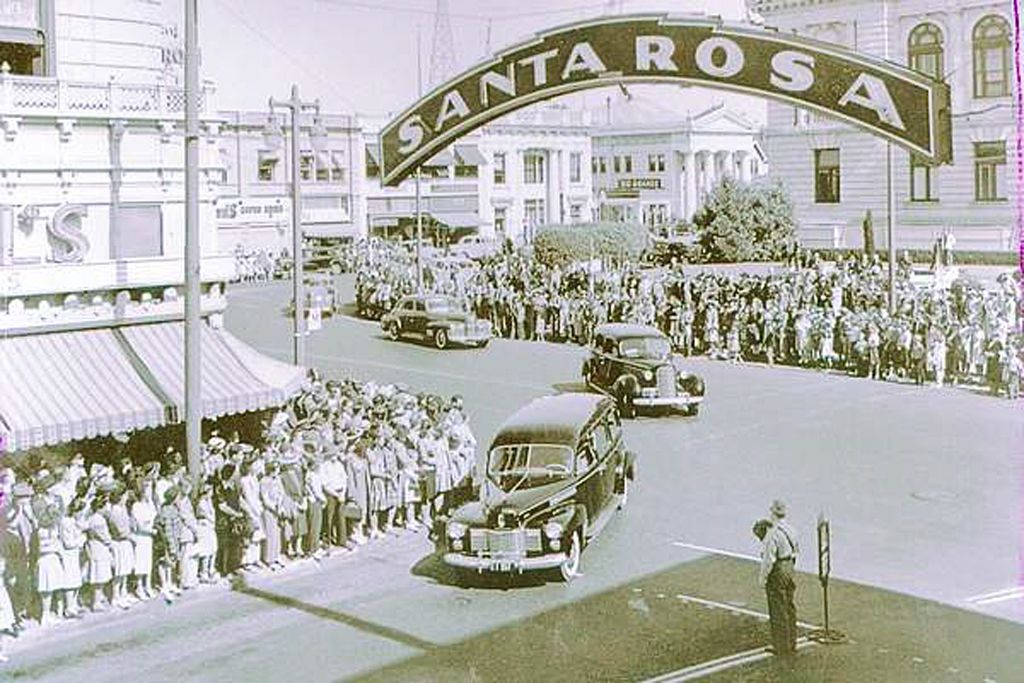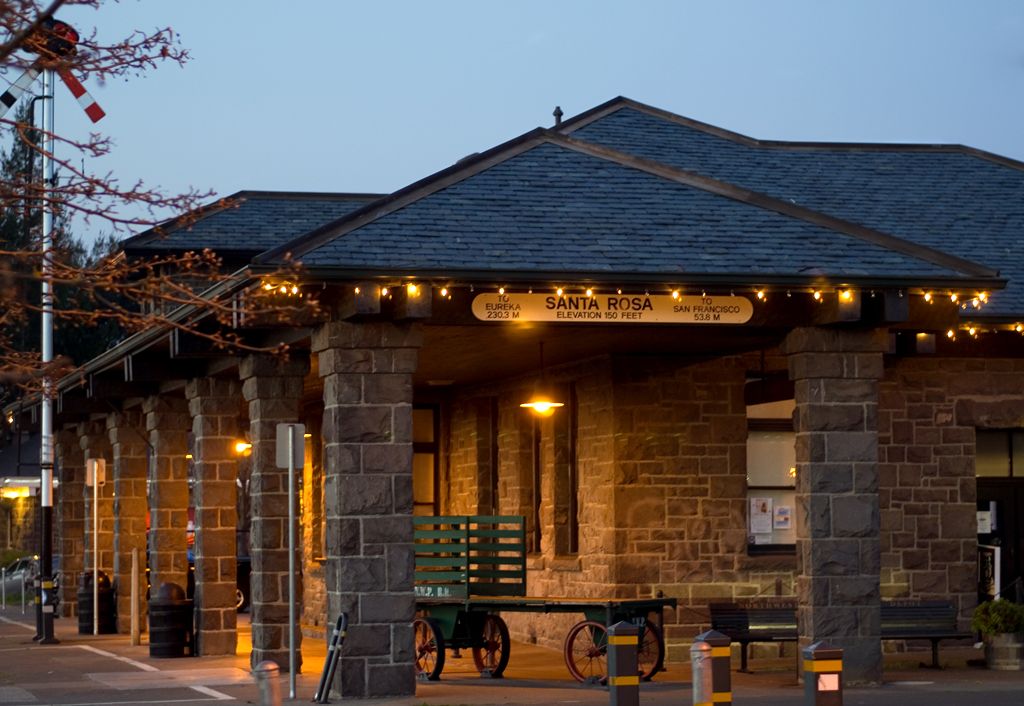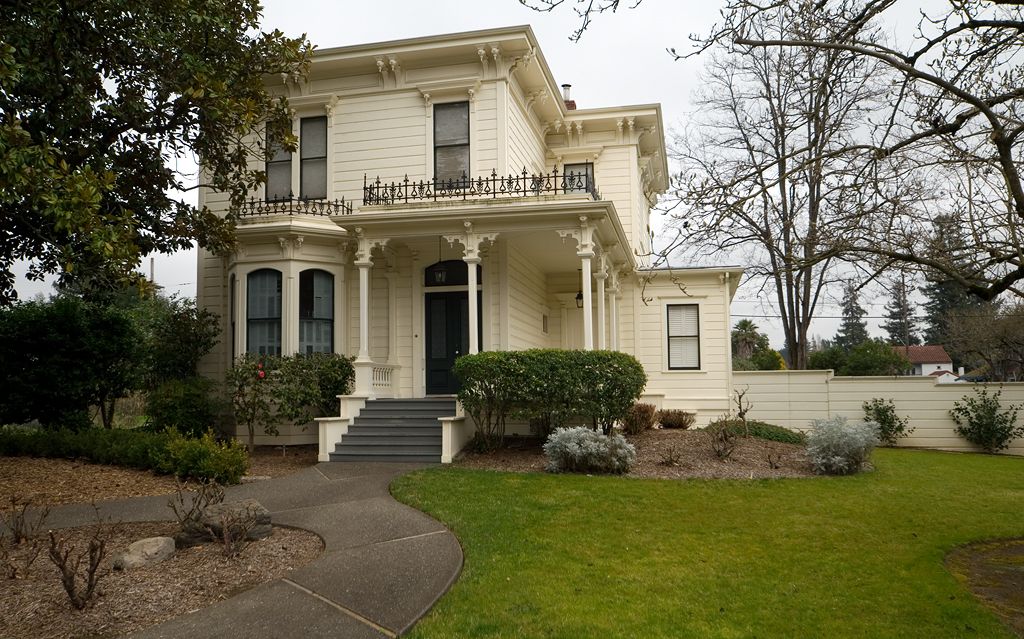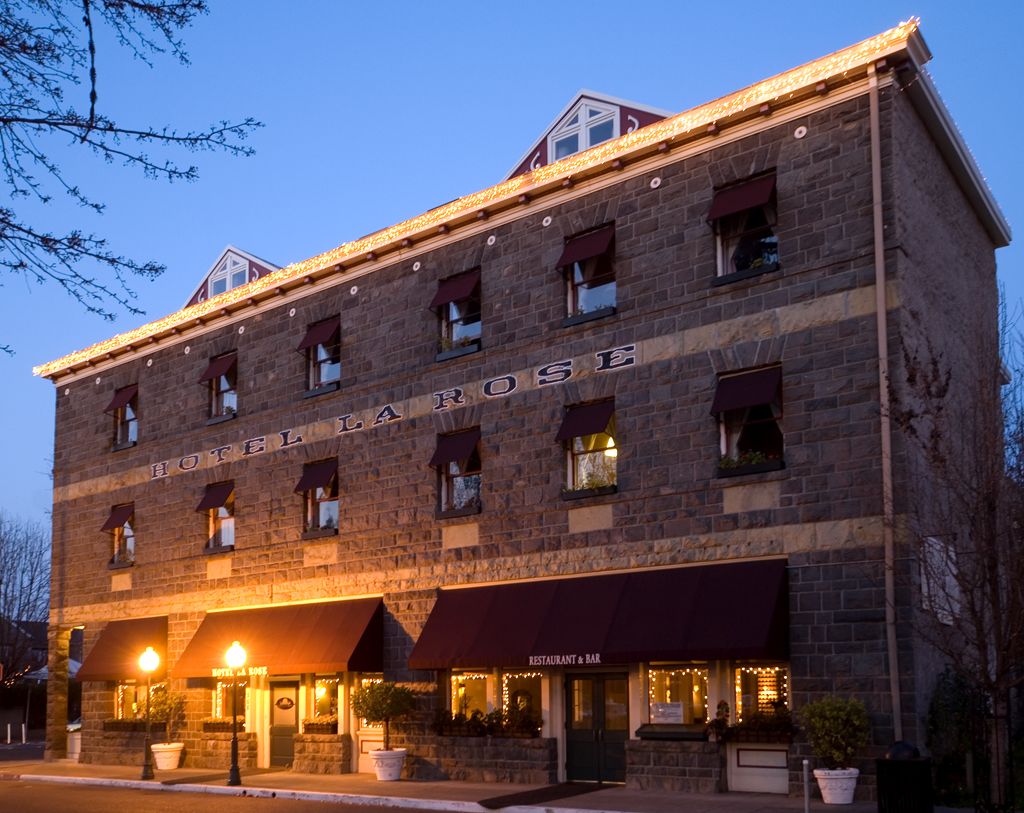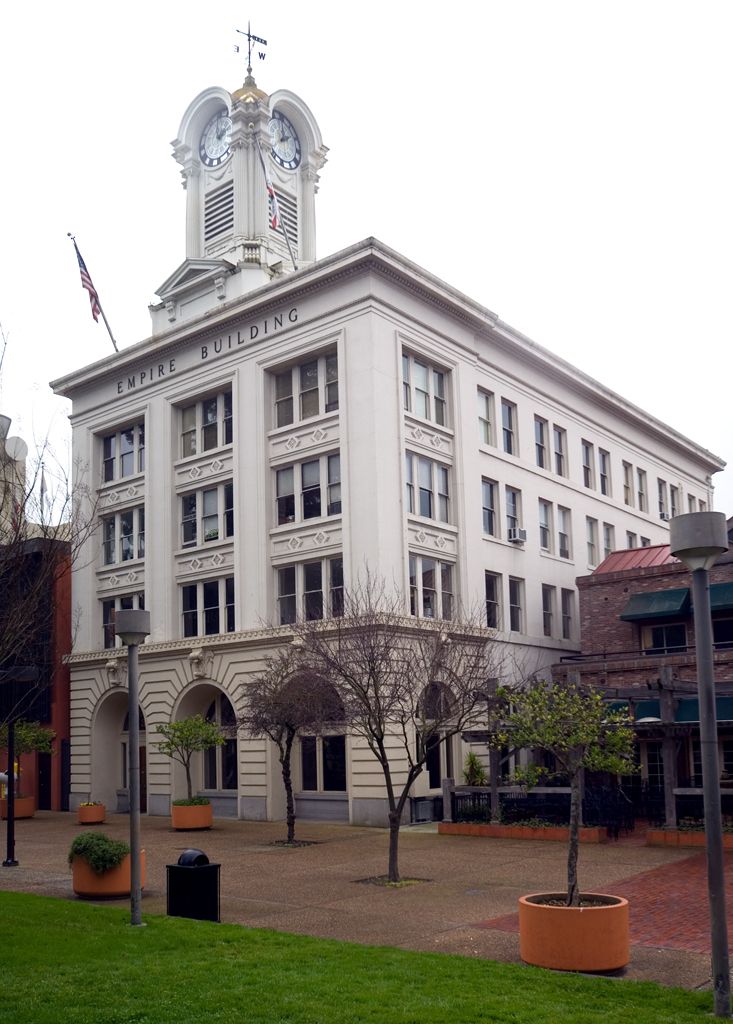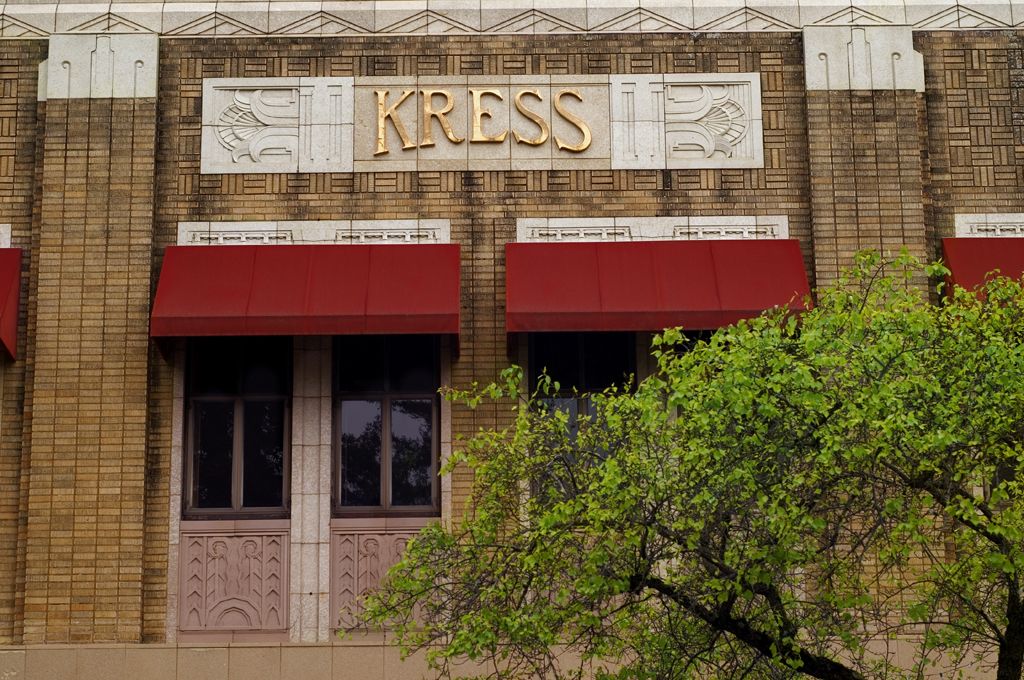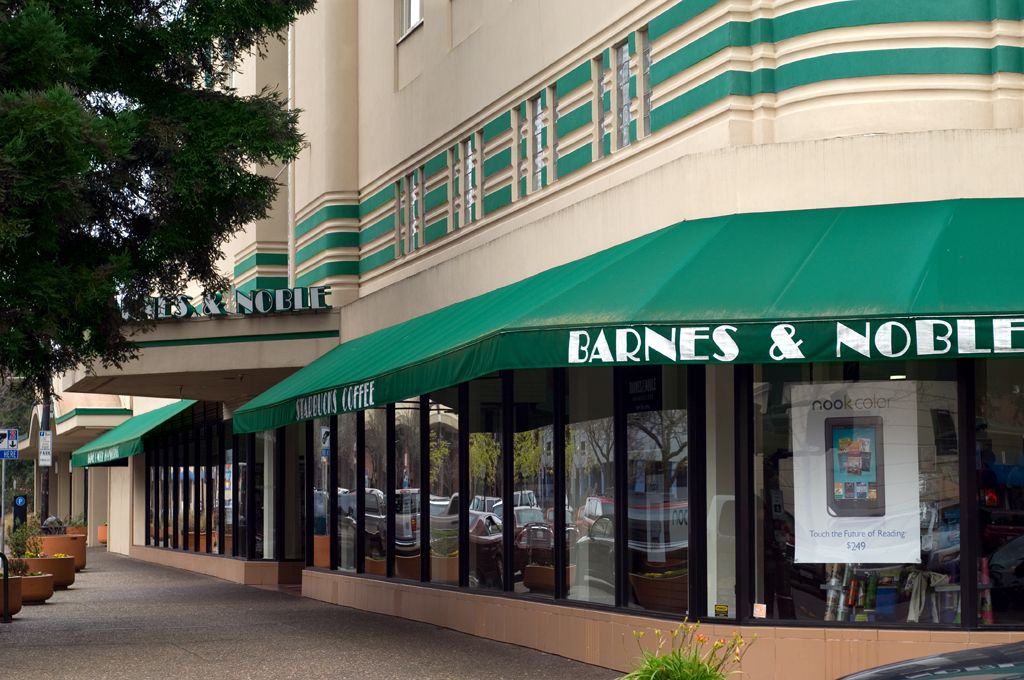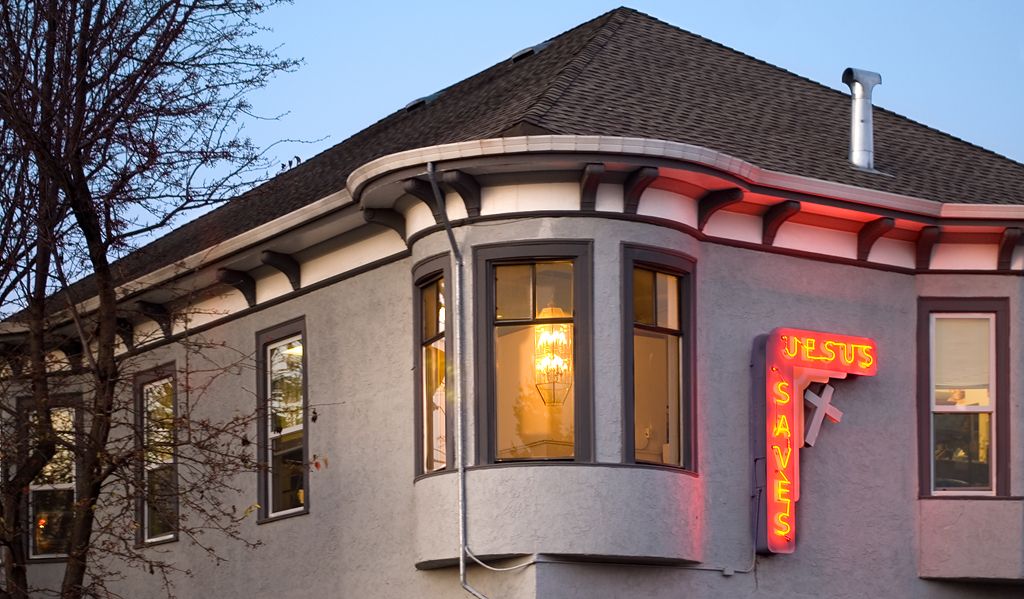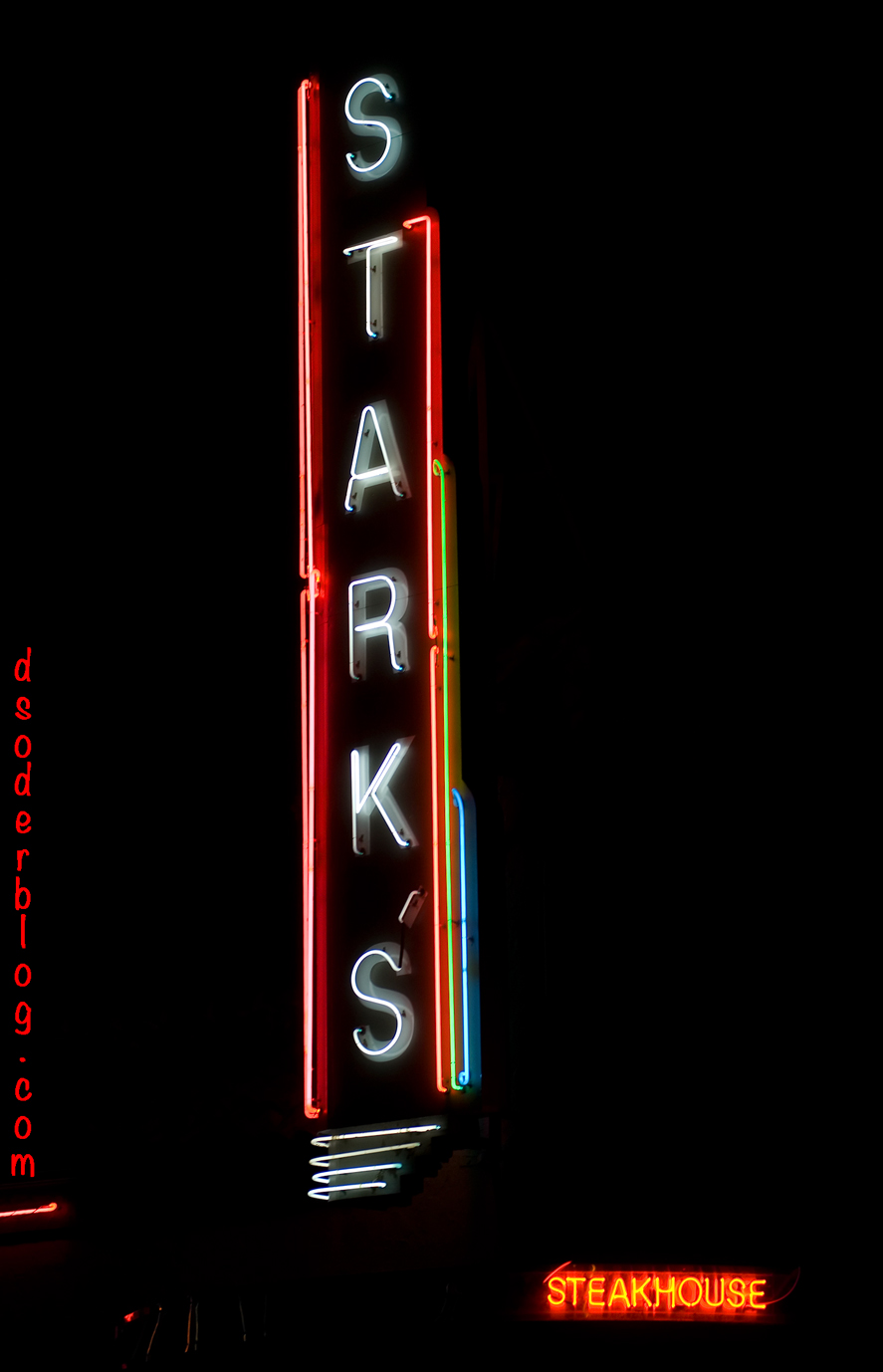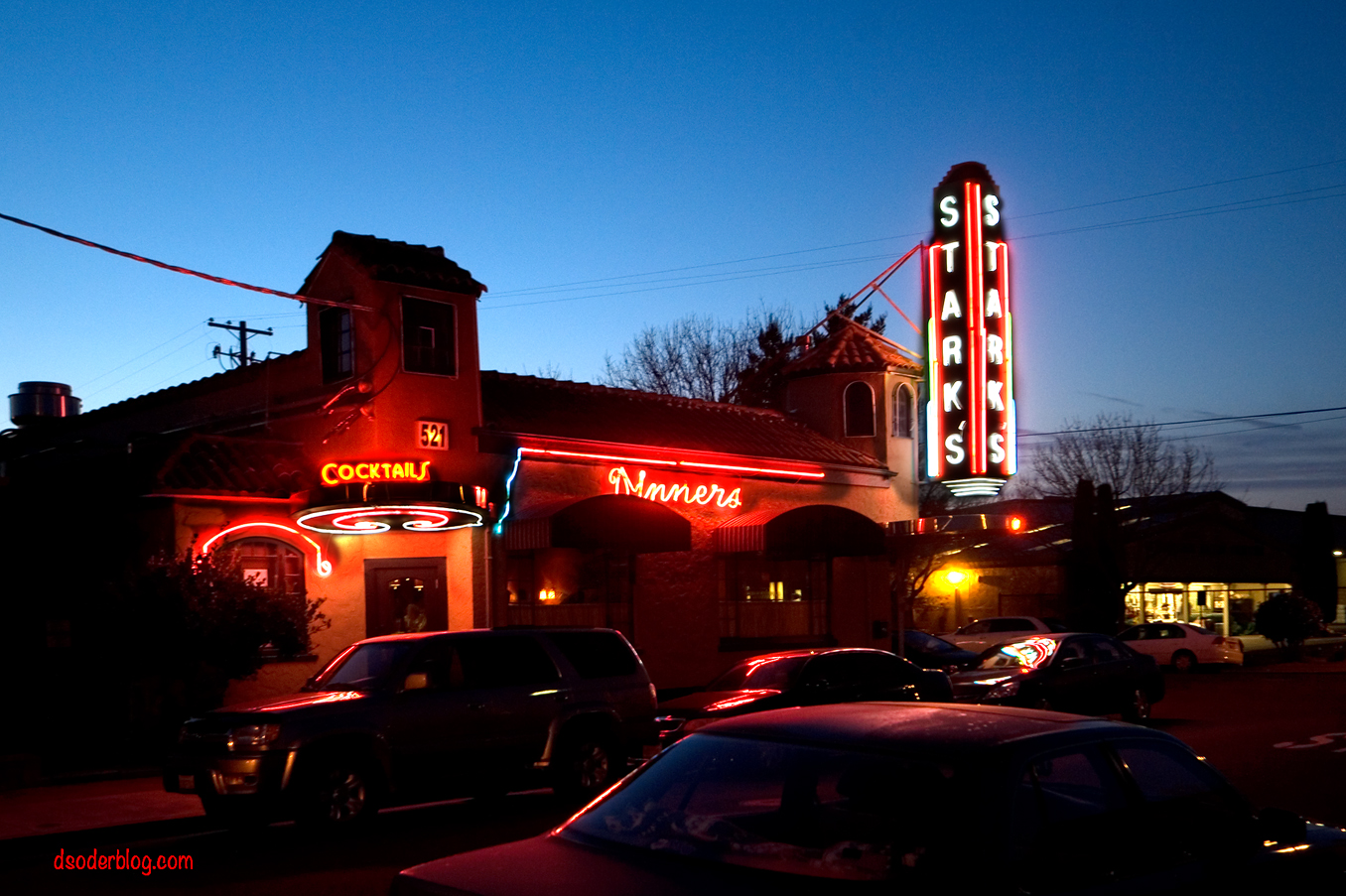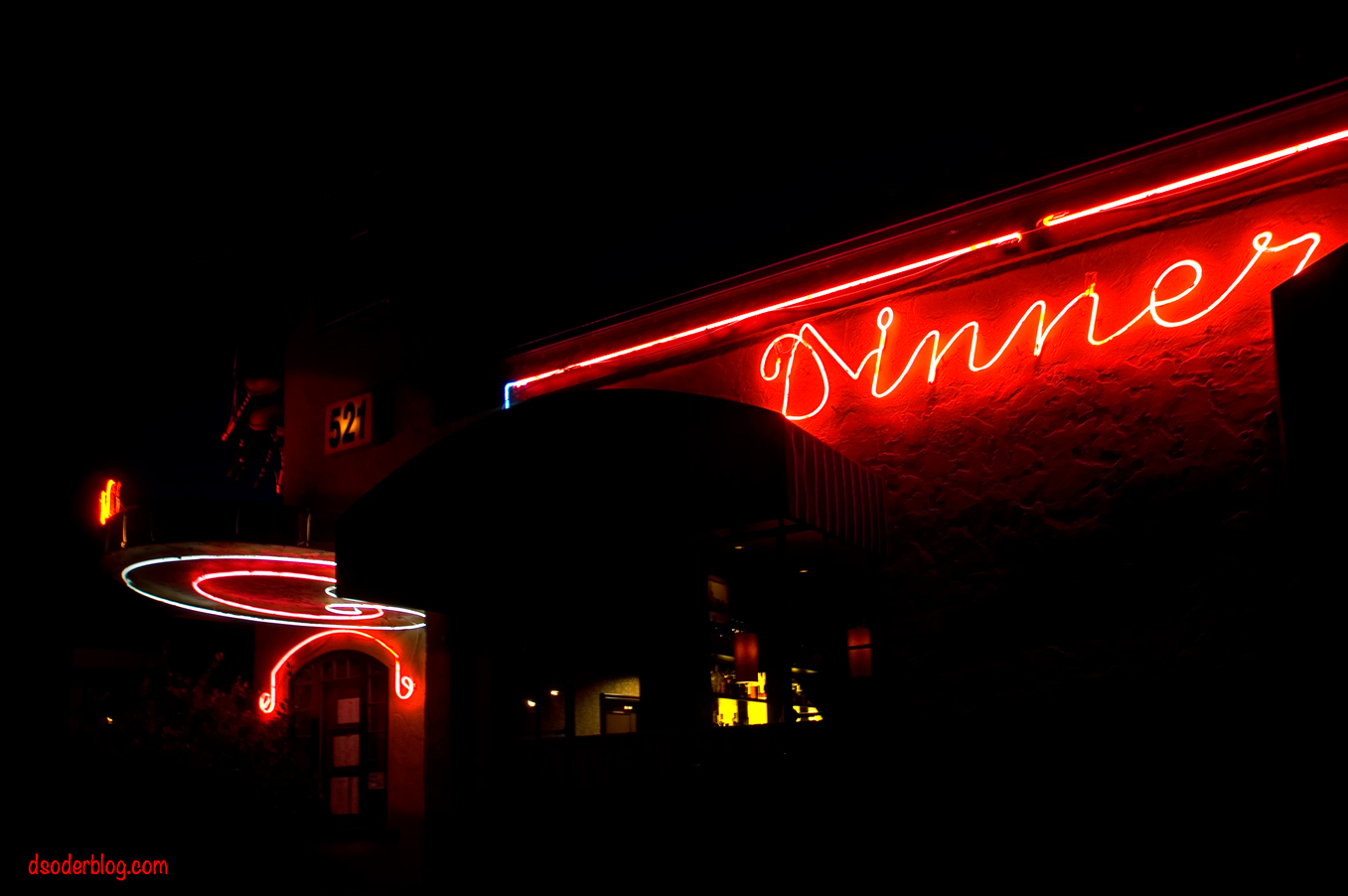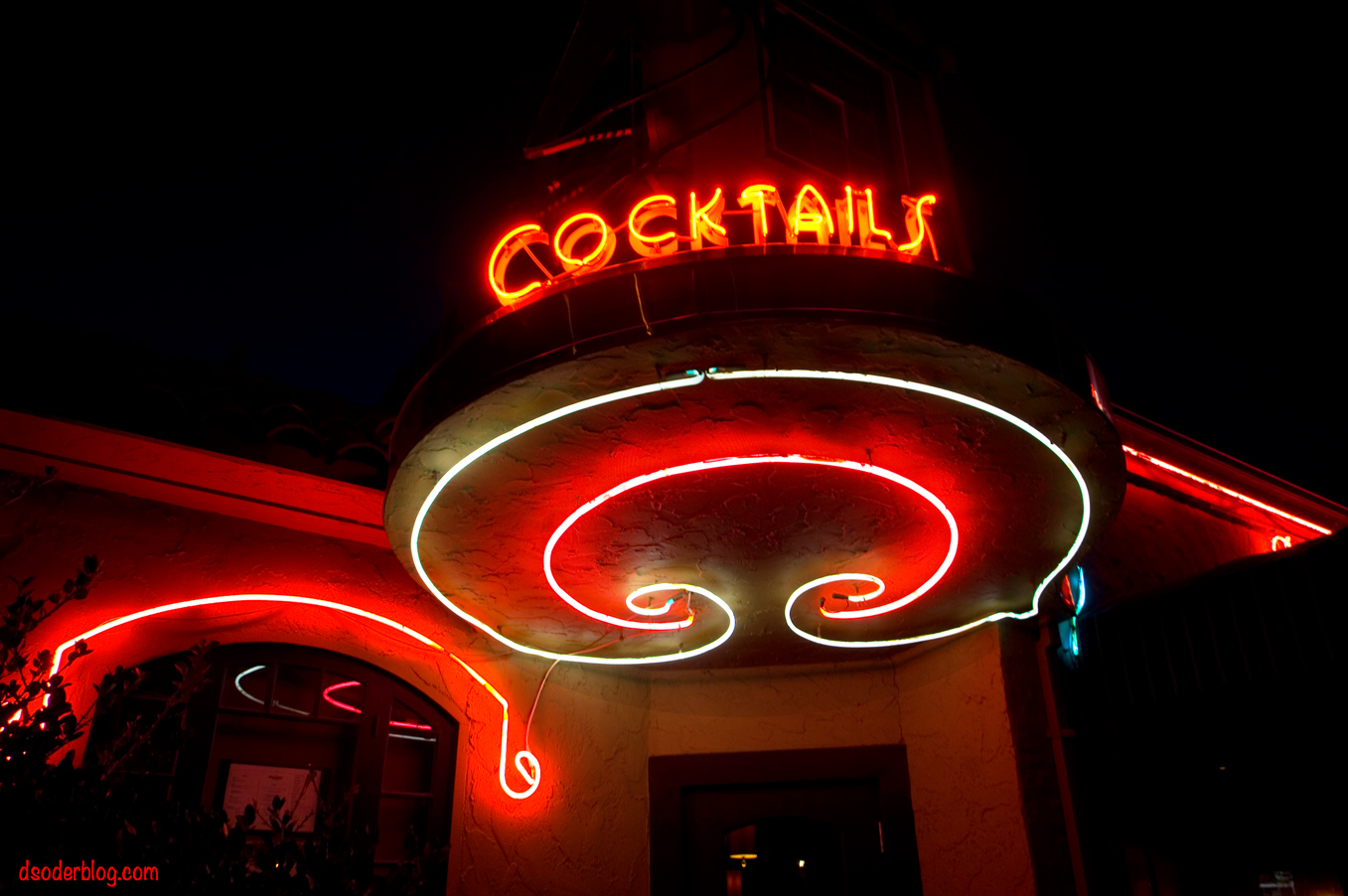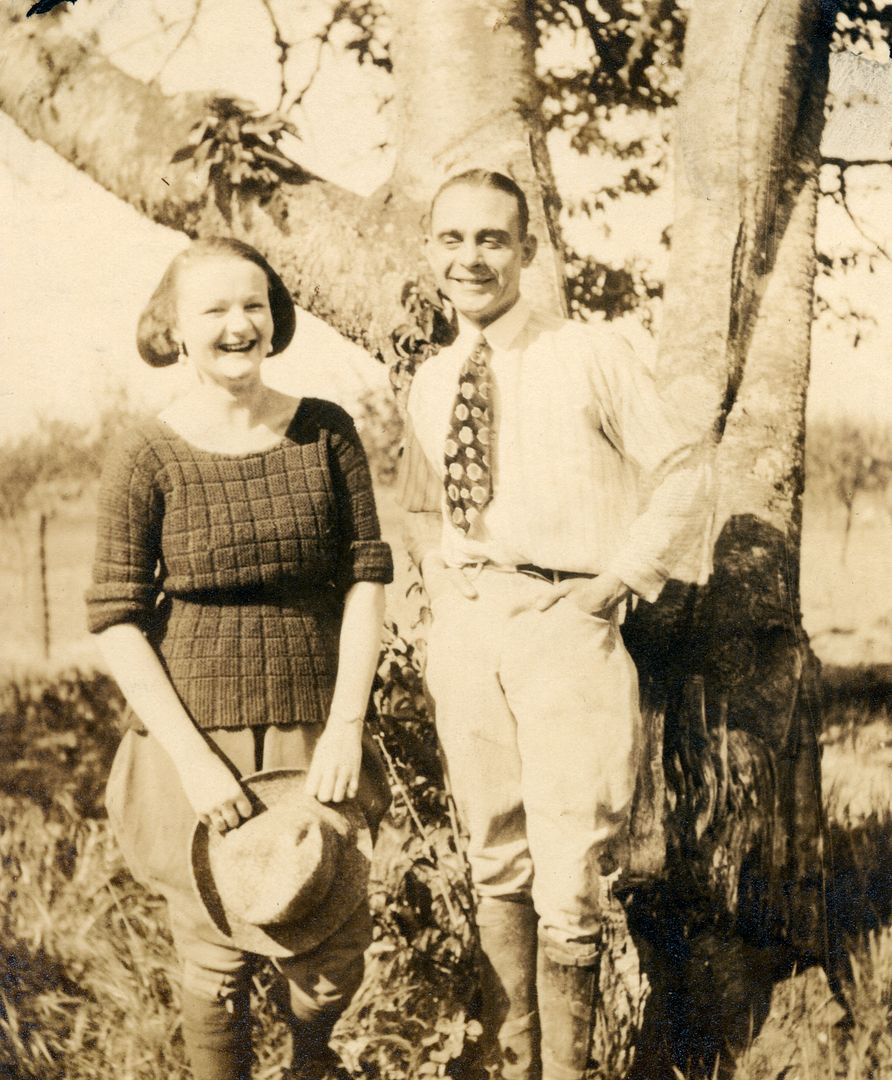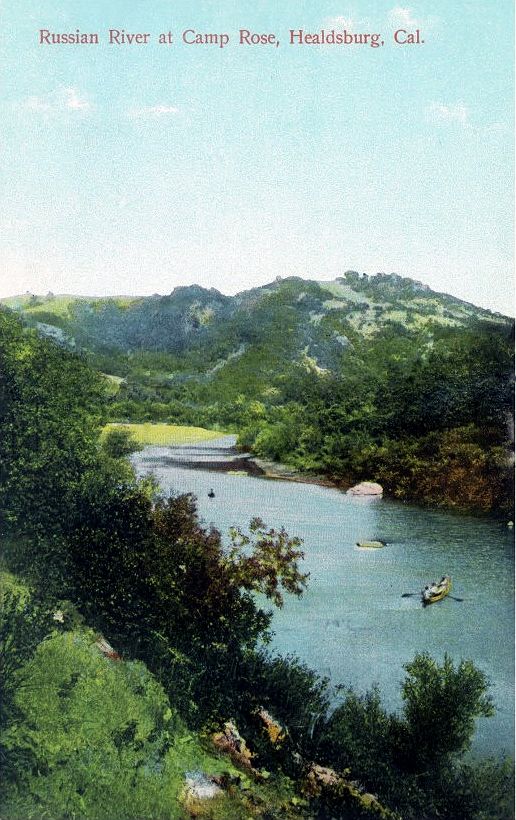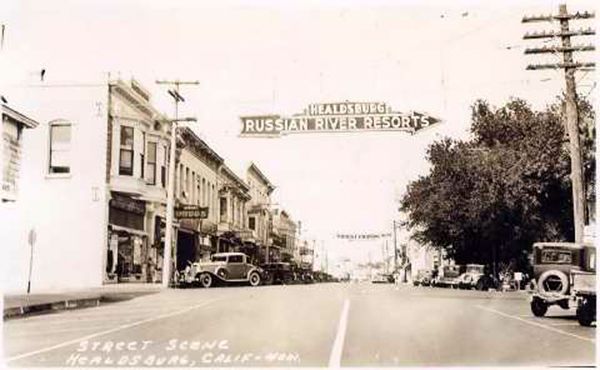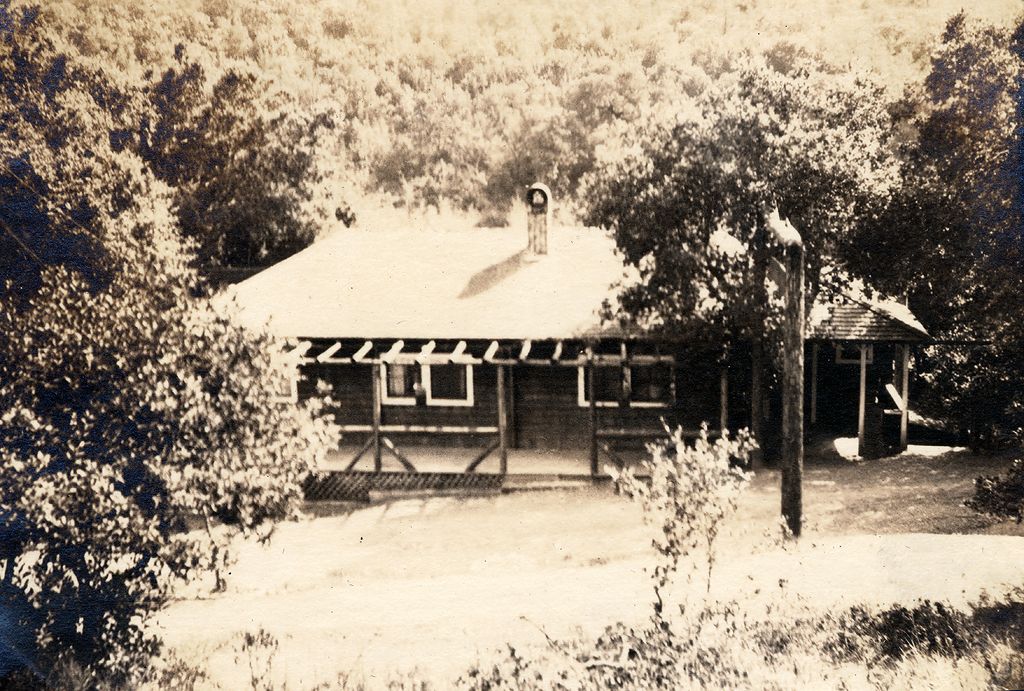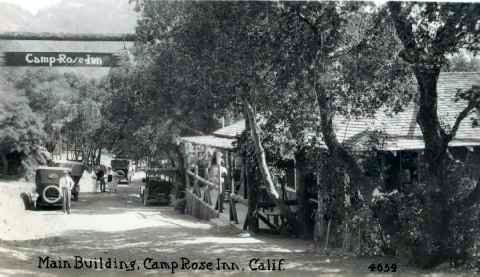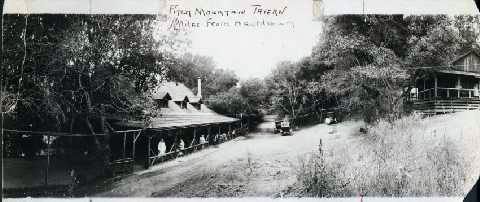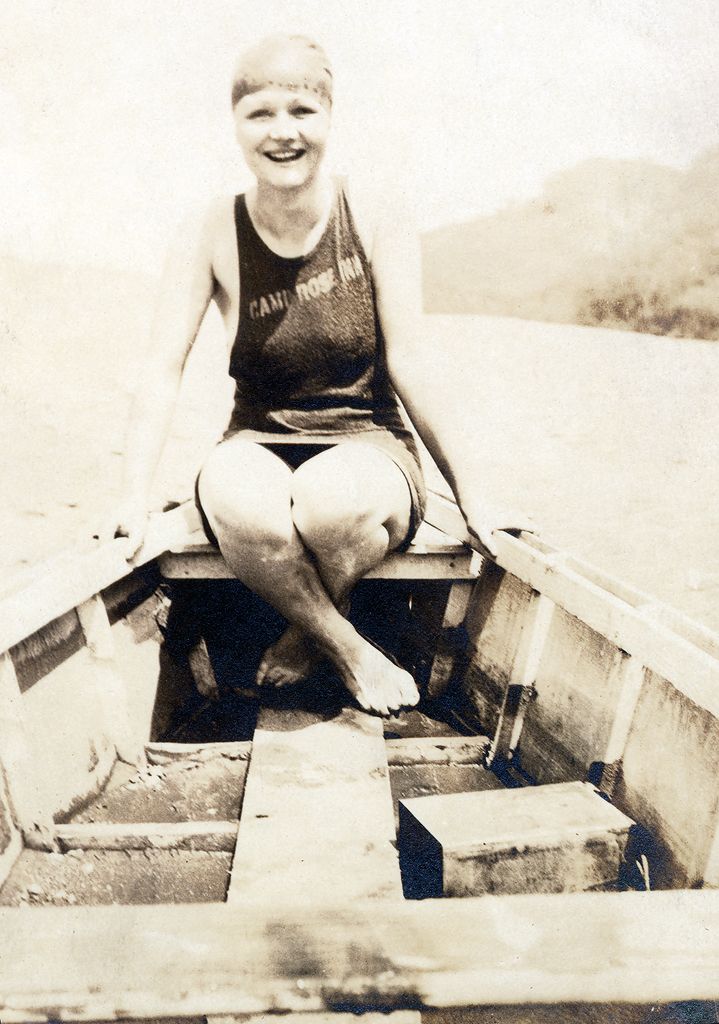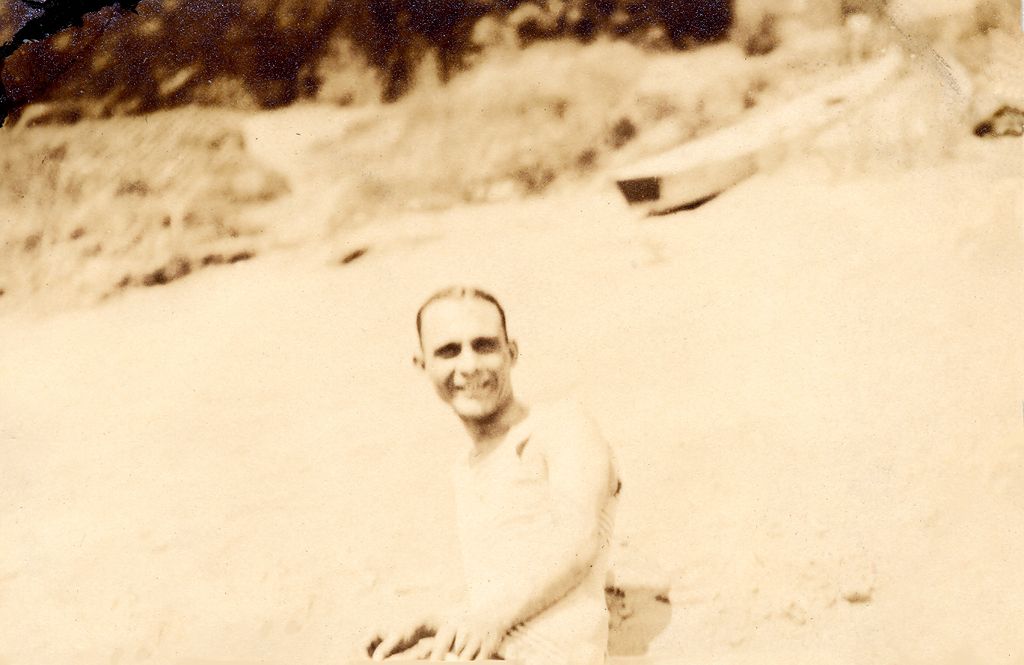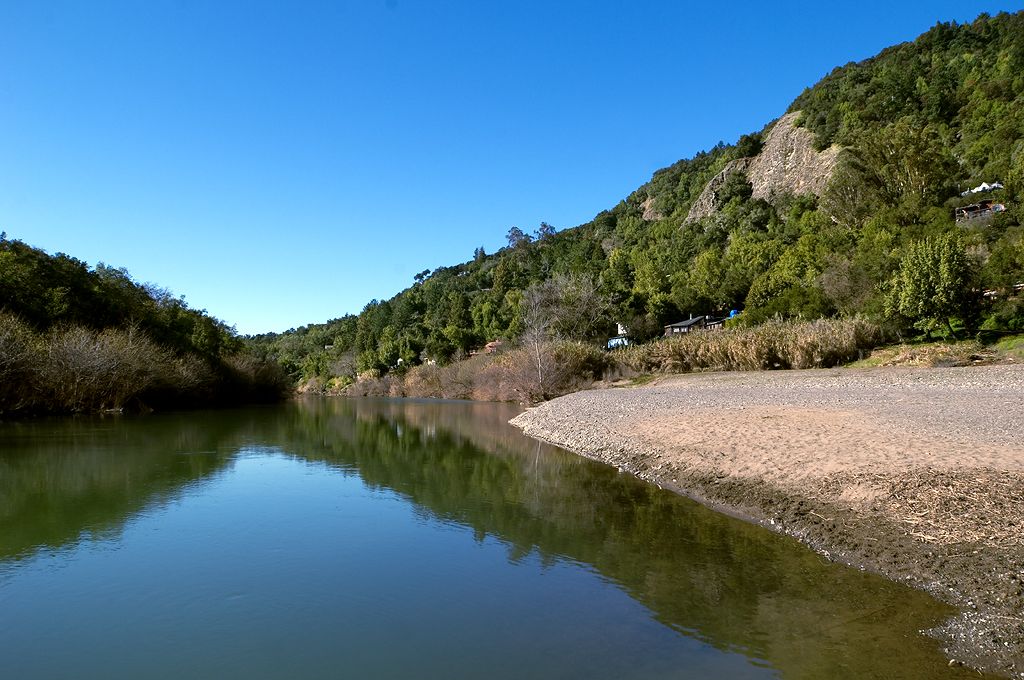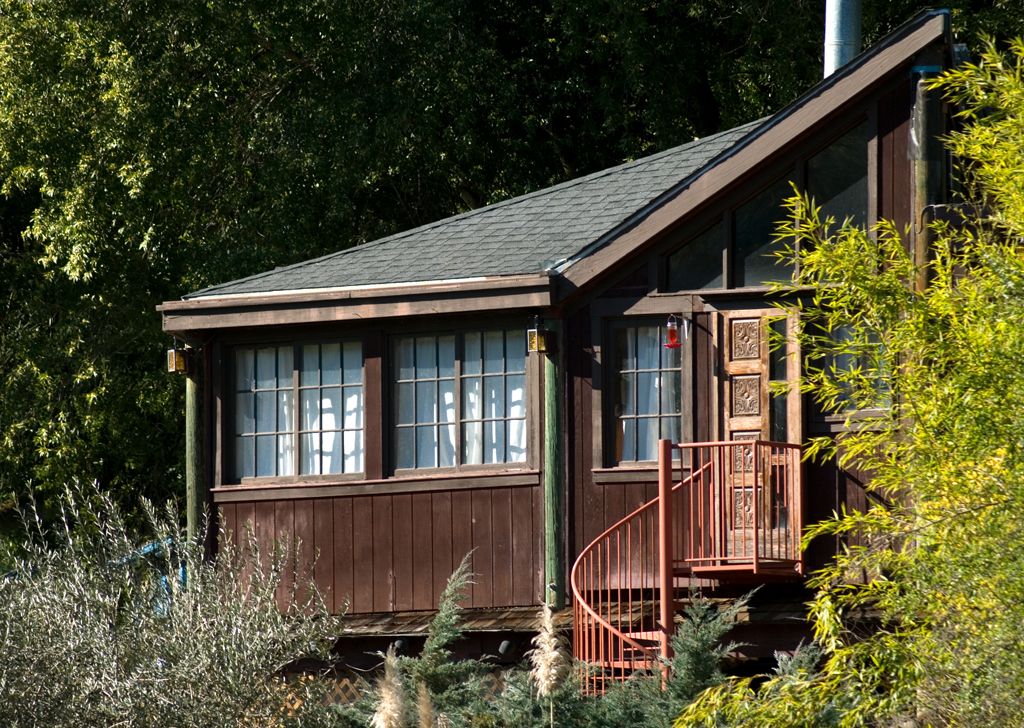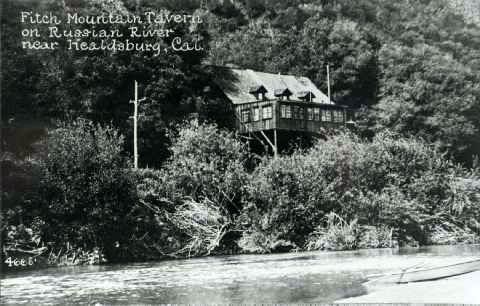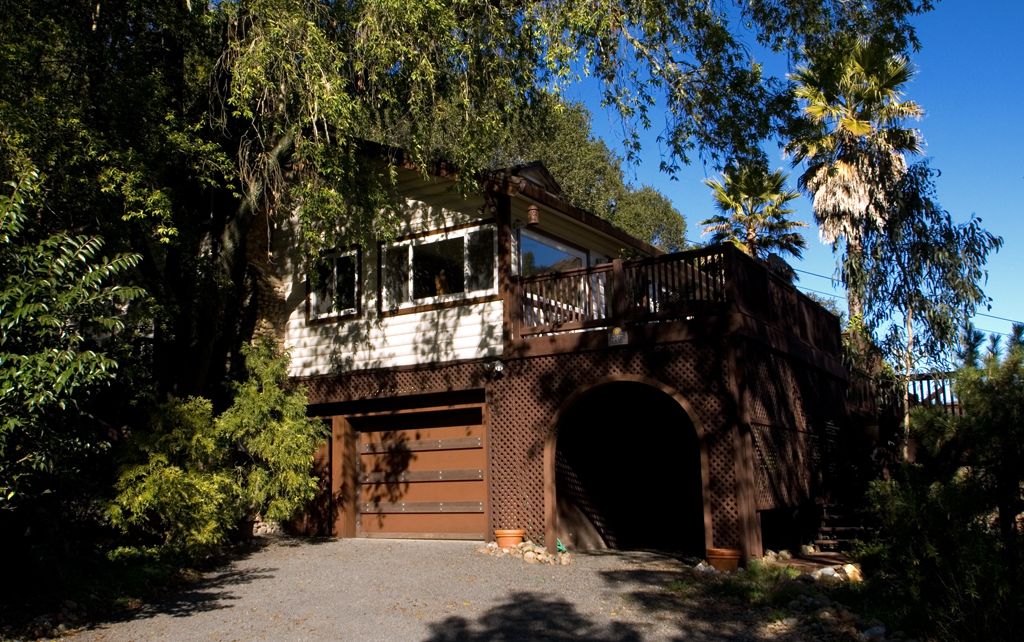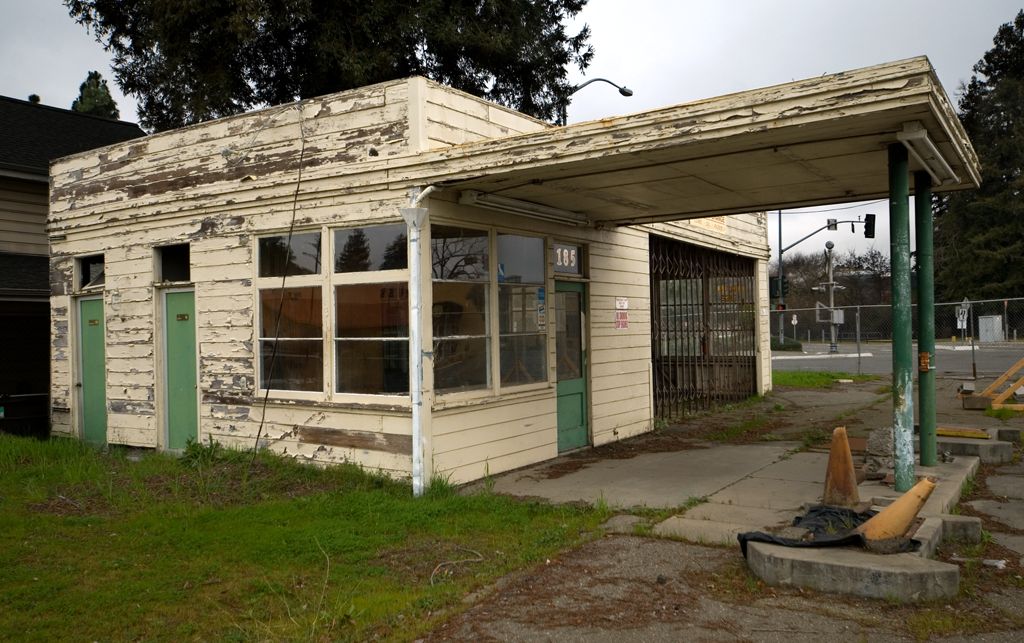
This forlorn VERY old Texaco station is in Healdsburg, CA.
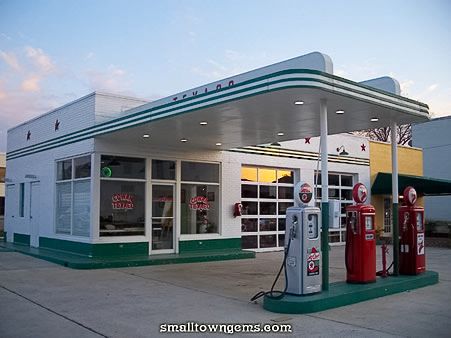

In its day it would have looked something like these. Top, a restored Texaco station in Cowan, Tennessee Photo courtesy of SmallTownGems.com. Below, the toy Texaco station from the late 1950’s or early 1960’s. That’s for sure because I had one!
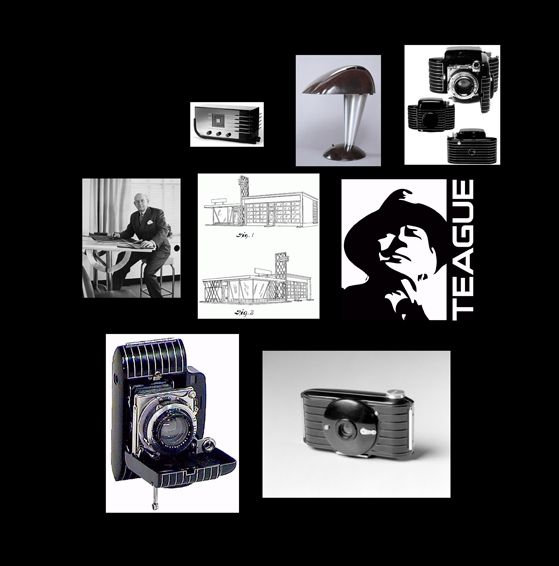
The Texaco stations were the creation of renown industrial designer Walter Dorwin Teague. His work is some of the most iconic of the twentieth century.
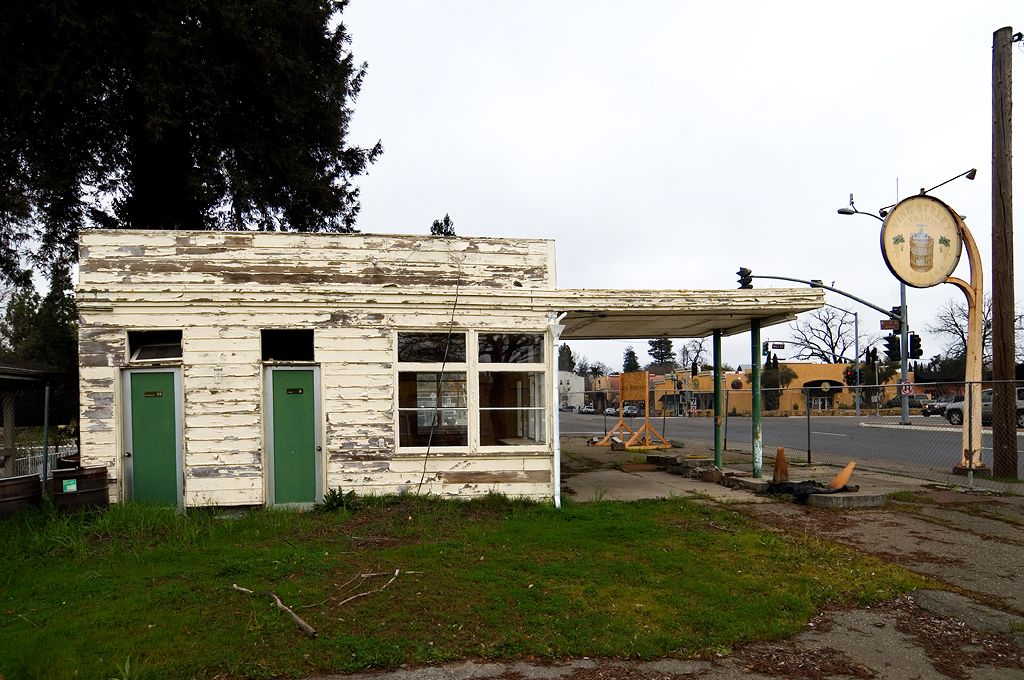
I am particularly interested in the sign. It seems to me an earlier version of what became their best known sign, as seen in the toy above. This particular style I’ve only seen once or twice in various Google searches.

I believe the sign to be very rare, and I hope the folks in Healdsburg can at least save the sign, if not the station itself.

Here is a restored sign at the R.C. Baker Museum in Coalinga, CA. Photo by Dylan Szoshke.
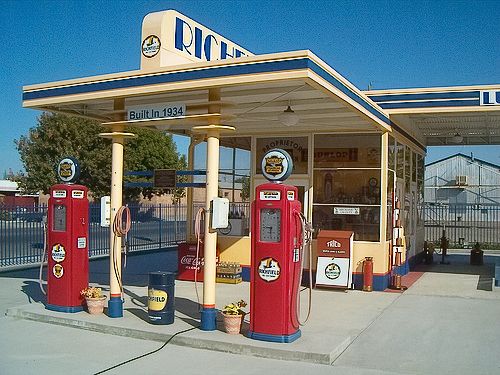
R.C. Baker Museum
Restored historic gas stations ad color and interest to the fabric of our urban landscape. We learn about the changing look of industrial or commercial design over the decades. It points to the rise and dominance of the automobile in our culture. The need for speed and convenience. These are just a few examples of the teaching that historic buildings provide.
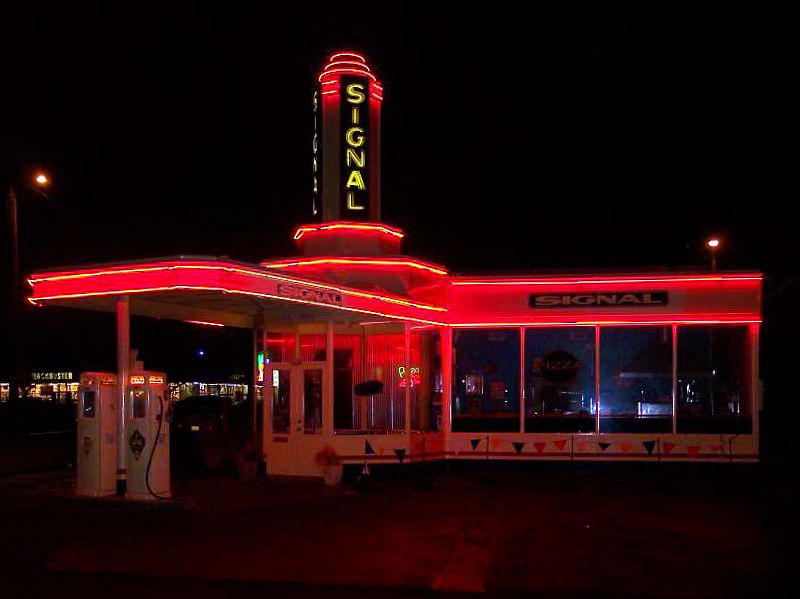
Adaptive Reuse. SIGNAL STATION PIZZA Located at the historic gas station in St. Johns 8302 North Lombard Street (At North Charleston Avenue) Portland, Oregon
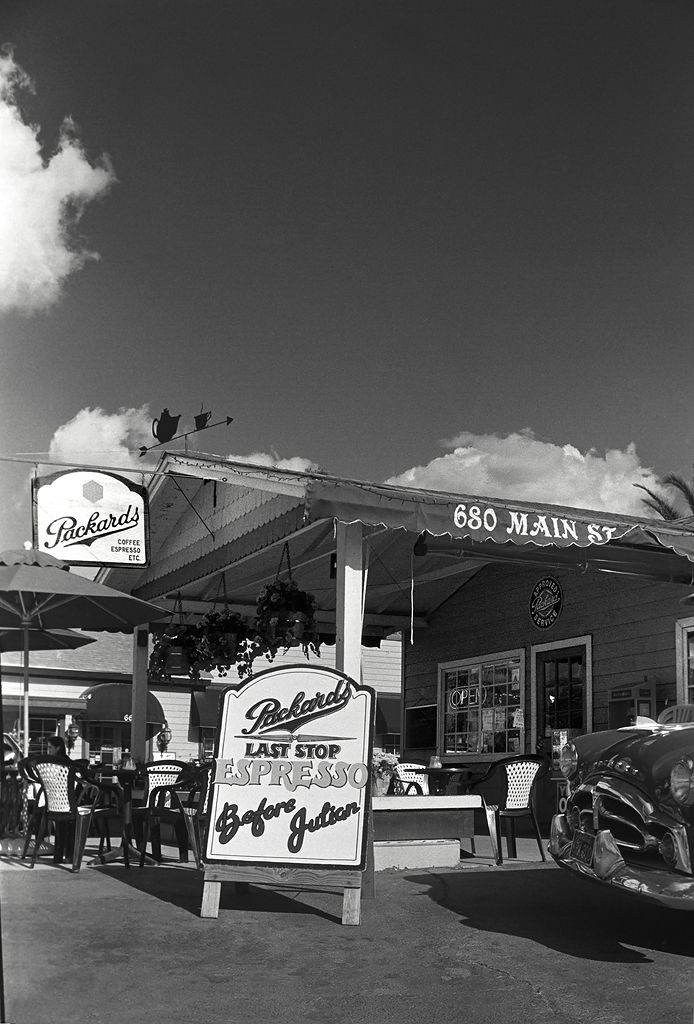
Adaptive Reuse. Packard’s in Ramona, is a popular coffee house.
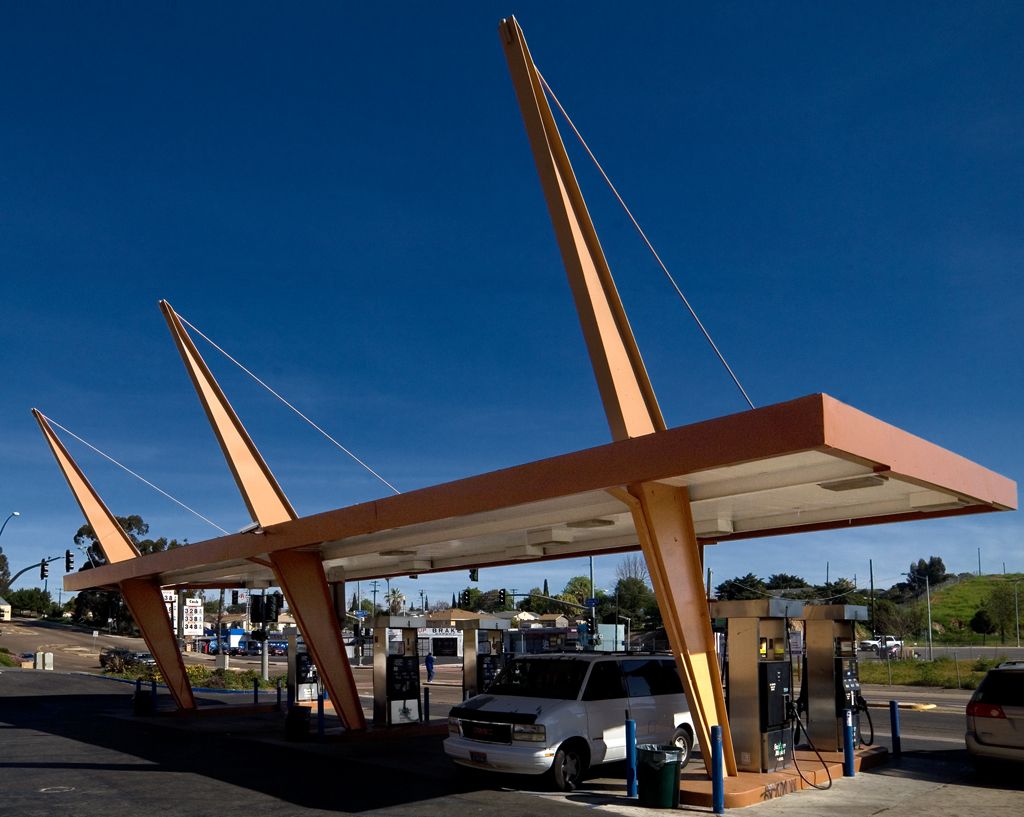
San Diego Historical Resources Board Designation. Johnson’s Wilshire Gas Station 4689 Market Street, San Diego. The resource embodies the distinctive characteristics and character defining features of Googie architecture and retains a good level of architectural integrity from its 1962 period of significance.
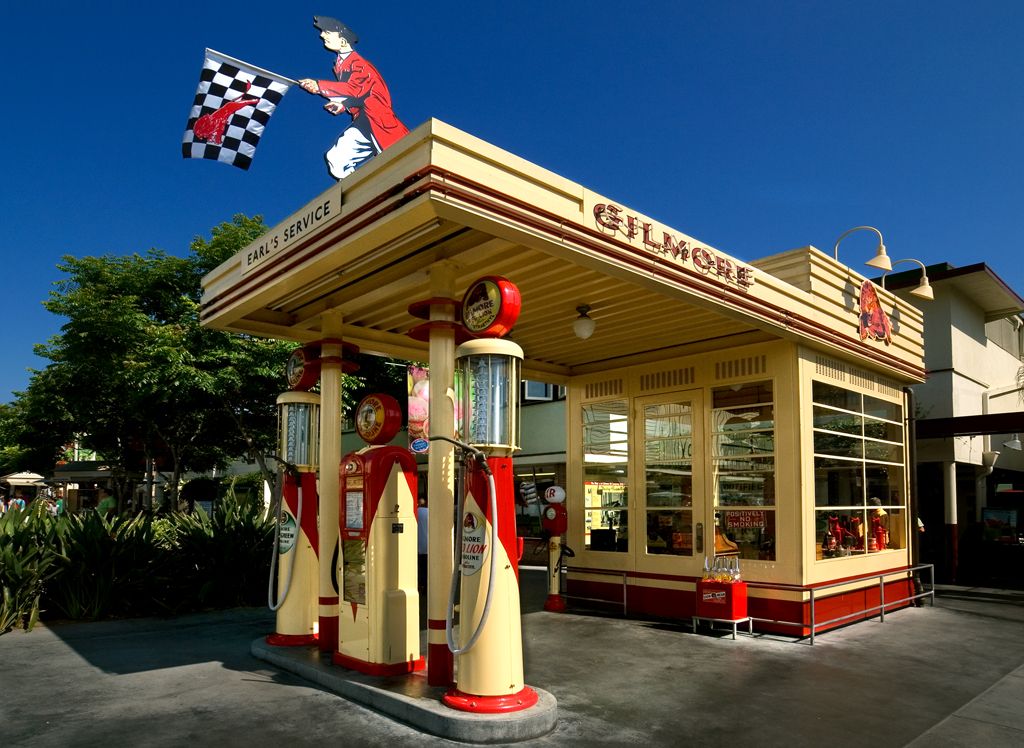
The Appeal of Historic Design Features. This Gilmore Gas Station at the Fairfax Farmers Market in Los Angeles helps make this destination popular to locals and tourists alike.

Keeping Community Character. Mike Burnett (jumping) and Craig Abenilla (kneeling) own the Golden Hill architecture firm, Foun-dationForForm. Their plans to develop the site at 811 25th Street appears to utilize the mid century gas station at the site rather than demolish it. Kudos to you gentlemen!
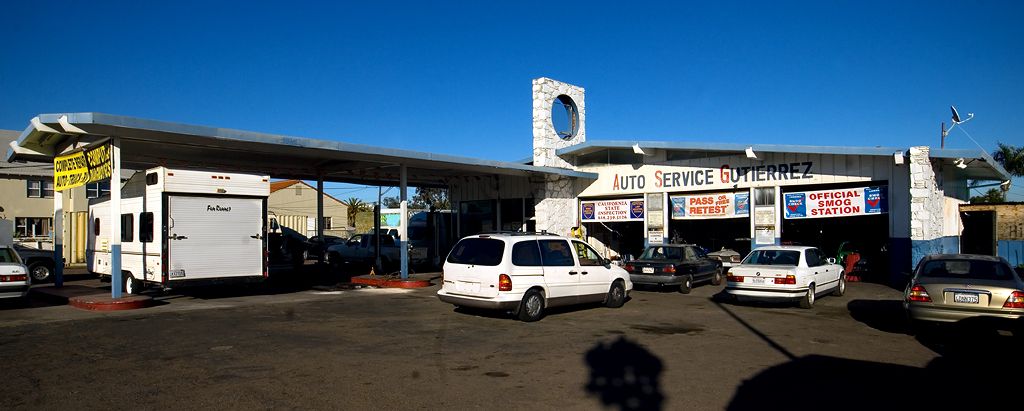
It was a Texaco station with characteristic mid century design elements. Not nearly as old as Santa Rosa’s, but it is good news it won’t disappear. And we look forward to it it looking great, if not better than ever one day.
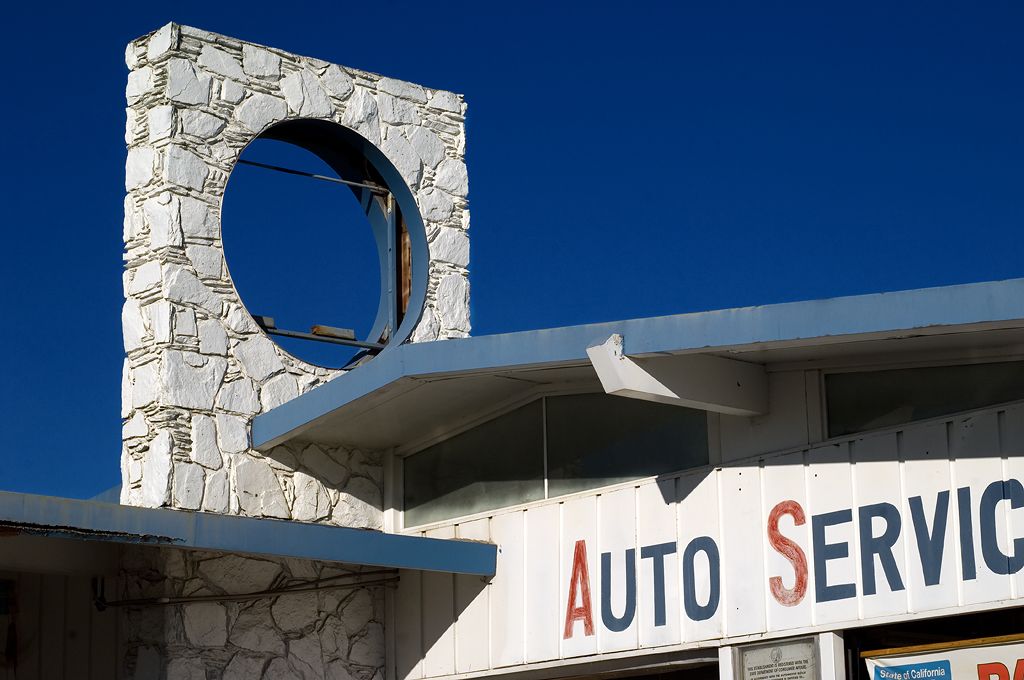
It should be illegal to paint over natural rock! Midcentury design elements at play here. A thick rock sign blade with circular cut out. Post and beam. Clerestory windows, Board and batton wall effect.

The former Texaco Station at University and First is a vintage Walter Dorwin Teague era building. It would be wonderful to see great things happen to this resource as we’ve seen in other cases.
 Dan Soderberg Photography
Dan Soderberg Photography
